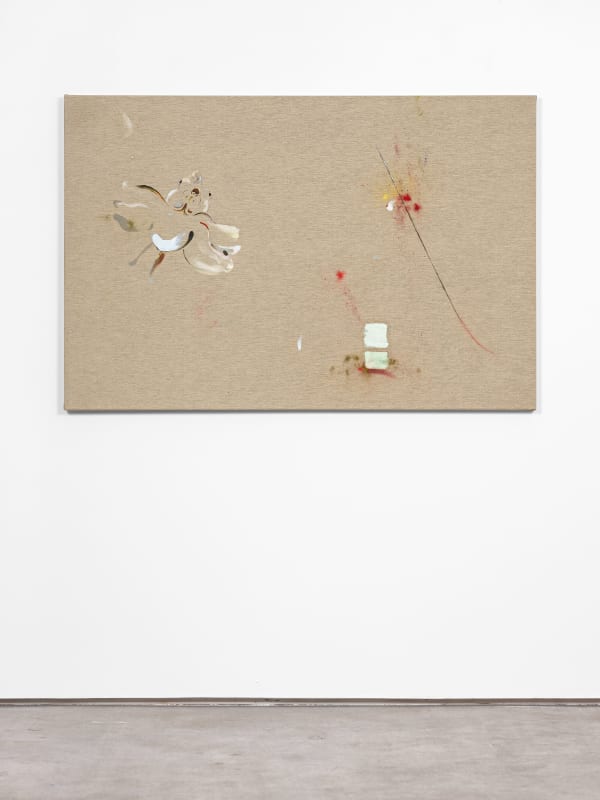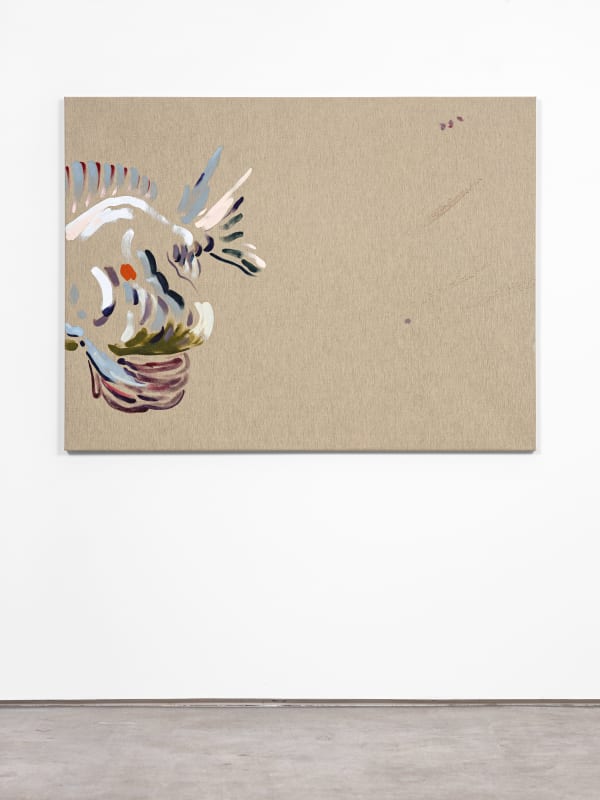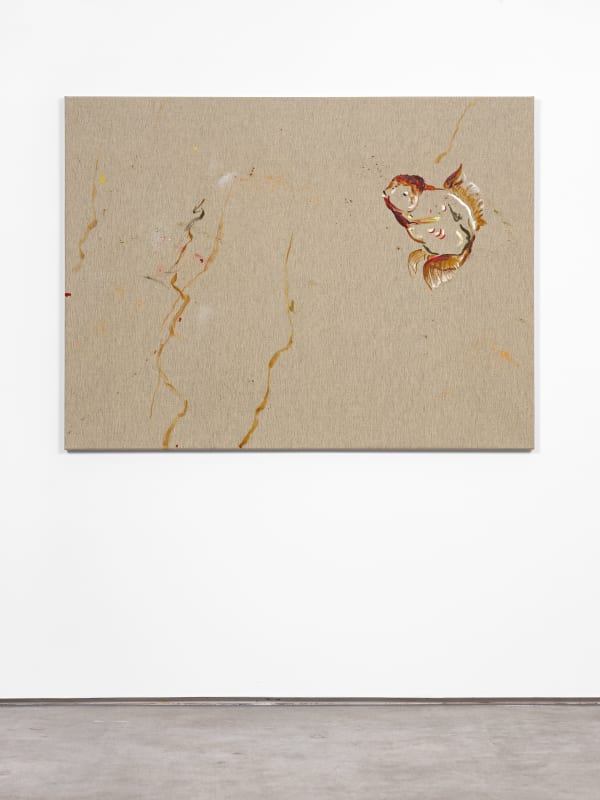ANNA ZACHAROFF: "(Pointing with the Whole Flat Hand)"
STANDARD (OSLO)
PRESS RELEASE
-----
ANNA ZACHAROFF
"(POINTING WITH THE WHOLE FLAT HAND)"
02.11.-01.12.2018 / Preview: 02.11. 2018 / 19.00-21.00
-----
STANDARD (OSLO) is proud to present a solo exhibition of new works by Anna Zacharoff, gathering a group of paintings all dedicated to the fish entirely constructed by man but never to be consumed: the goldfish.
If "Gone in 60 seconds" was a film starring goldfish, there would be 20 twists and turns to the plot before the minute had come to an end. Supposedly the goldfish is only equipped with a 3 second long attention span. Instantly forgetting what is was initially supposed to do, it almost seems humane to put the goldfish in a bowl. It is not so much an act of imprisonment as it is an act of clarification. There are only two ways to go, and they both take you back to the spot where you started. It leaves the goldfish with a task not too complicated to perform - a Tayloristic management of movement, so to speak.
During his studies of workers in the steel manufacturing industry in America during the 1880s and 1890s, Frederick Winslow Taylor pioneered what came to be known as a scientific management of the workplace. His brutal analysis, however, frequently failed to conceal a condescending attitude towards less intelligent workers: "Now one of the very first requirements for a man who is fit to handle pig iron as a regular occupation is that he shall be so stupid and so phlegmatic that he more nearly resembles in his mental make-up the ox than any other type. The man who is mentally alert and intelligent is for this very reason entirely unsuited to what would, for him, be the grinding monotony of work of this character. Therefore the workman who is best suited to handling pig iron is unable to understand the real science of doing this class of work." Taylor identifies a comfort in knowing exactly what you are expected to do and the comfort of not needing to worry about anything located outside of that. Similar to a young Jim Carrey as Truman Burbank before suspicion sets in later in "The Truman Show", taking comfort in the same patterns daily repeating themselves. Blissfully unaware of the need to choose, or weighed down by other expectations, Truman is making the same circles in his goldfish bowl version of a world. And the viewers that are watching him daily on TV are sensing a calming feeling, like looking at a fire - uneventful but pleasant. No need to think, overthink or focus on anything but the moment in itself. The moment that replaces another similar moment; predictable, forgettable, replaceable. The goldfish bowl is not for major contemplation.
Yet the goldfish is the motif that runs throughout the third exhibition of Anna Zacharoff at STANDARD (OSLO). The starting point for this series of paintings was not staring at a goldfish bowl but a visit to a now defunct small aquarium in Brussels showcasing what we do not know: the goldfish in its original breed and in its original surrounding. This sturdy small fish, belonging to the carp family and stemming from China, was one of several endangered species that here were attempted bred and kept in an environment as close to their natural habitat as possible. Referring back to a time before creative leisure and carp ponds in parks, a time before Matisse paintings of interiors with goldfish bowls and a time before a general cultivation of this species as an element of decoration of modern life. The very colour orange only identified and named in the late 15th century, when Portuguese merchants brought orange trees back to Europe after travels in Asia. Prior to that the colour had only been referred to as yellow-red. Interestingly enough, the goldfish made the same journey from Asia to Portugal a mere 100 years thereafter. During the early 1600s, goldfish were highly regarded in southern Europe because of their brightness of colour and metallic scales, and came to symbolise good luck and fortune. Married men would in fact give their wives a goldfish on their first anniversary, as a symbol of a prosperous future. The tradition, however, died as goldfish became more available, losing their attraction value. Now, reduced to the most clichéd and "man made" of pets, and commonly dumbed down to two big eyes, a belly, a mouth and that signal orange colour. They say that to dream about being a goldfish is a warning about protecting yourself.
-----
Anna Zacharoff (b. 1987, Stockholm) lives and works in Brussels, Belgium. She graduated in 2015 from the Städelschule - Staatliche Hoschschule für Bildene Künste in Frankfurt am Main, Germany. Recent solo exhibitions include "Breathe In Breathe Out" at Neue Alte Brücke, Frankfurt am Main, Germany; "So Far, So Food" at Vilma, Gold, London, UK; "Regular Co." at Kunstverein Wiesbaden, Wiesbaden, Germany. Recent group exhibitions include "My Dove" at Marquise, Lisbon, Portugal; "Now wakes the sea", Lewis Glucksman Gallery, University College Cork, Ireland; "Tilting at Windmills" at Roberta" at Frankfurt am Main, Germany;"Neither" at Mendes Woods, Brussels, Belgium; "Nuit Américaine" at Office Baroque, Brussels; and "Freak Out" at Greene Naftali Gallery, New York.
-----
Installation photography: Vegard Kleven

















